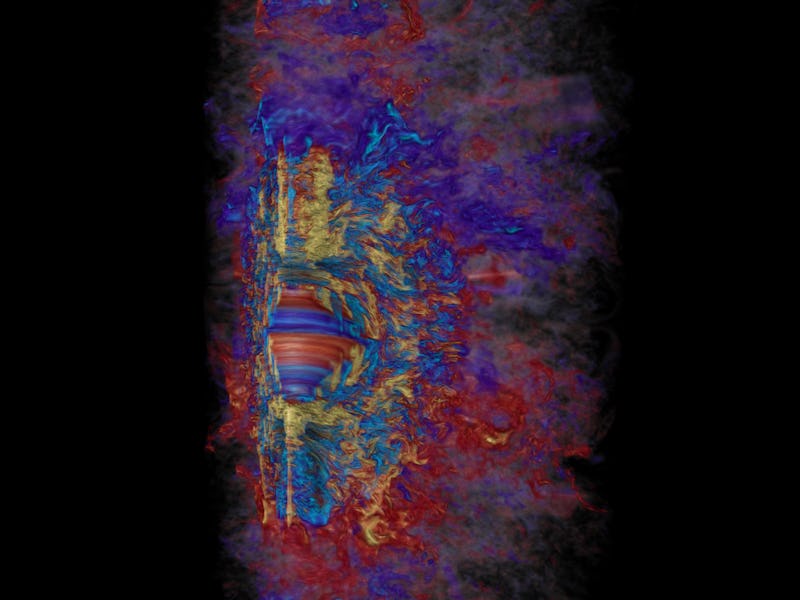Scientists Have Solved a Mystery Behind Hypernovas and Gamma Rays
It's a crazy, wonderful time to be studying the universe.

A supernova is basically the bright flash of an exploding star that shines brighter than the entire galaxy in which it resides, emanating more energy than an ordinary star can produce over its entire lifetime. The explosive bursts of radiation eject stellar material at velocities reaching 30,000 kilometers per second, or about 10 percent the speed of light.
Big deal. A hypernova is 10 to 100 times more powerful than a supernova. They’re the most energetic events in the known universe outside of the Big Bang.
Still from a NASA computer-generated animation showing black hole formation.
Unfortunately, there isn’t a whole lot more we actually do know about hypernovas, and they’re not easily studied. But modern technology has given us a few ways of studying these gargantuan celestial phenomena, in the form of computer simulations.
Scientists at the University of California, Berkeley used supercomputer simulations of a 10 millisecond collapse of a massive star — more than 25 times the size of the sun — into a neutron star to demonstrate how hypernovas can generate the magnetic fields necessary for a star to suddenly explode and emit thunderous bursts of gamma rays that can be seen halfway across the universe.
The findings, published Monday in the journal Nature, illustrate how a rotating star that is collapsing causes its magnetic field to spin more quickly with each turn, which results in a dynamo that spurs the magnetic field into growing a million billion times bigger than the magnetic field of Earth.
A dynamo is basically an electrical generator that makes an electrical current by rotating wires through a magnetic field. Stellar dynamos work in much the same way, generating electrical currents through rotations of the star.
For stars, however, the currents boost the magnetic field in a feedback loop that results in magnetic fields that are almost incomprehensible in size and magnitude.
The strength of these fields can create hypernova explosions, as well as produce long bursts of intense gamma rays.
“People had believed this process could work out,” lead study author Phillip Mosta said in a press release. “Now we actually show it.”
Of course, it took 130,000 computer cores operating side-by-side for two weeks straight to acquire the data that actually shows how this process works. The simulations took place at Blue Waters, one of the world’s most powerful supercomputers, located at the University of Illinois at Urbana-Champaign.
Understanding how hypernovas work is essential to learning more about the lives of stars, and understanding how cosmic phenomena like novas help create the very heavy elements we find in nature. Knowing how the process works can also shed light on how some neutron stars develop their own massive magnetic fields — and become what are called “magnetars.”
Artist's conception of a powerful magnetar in a star cluster.
The other, more practical value here, is in learning how the dynamo mechanism could work to create natural events found on Earth. For example, the findings could better explain how small-scale turbulence in Earth’s atmosphere grows into bigger weather events, like hurricanes or typhoons.
“What we have done are the first global extremely high-resolution simulations of this that actually show that you create this large global field from a purely turbulent one,” Mosta said.
It’s just another way that studying the astrophysics of outer space can help us understand life on Earth.